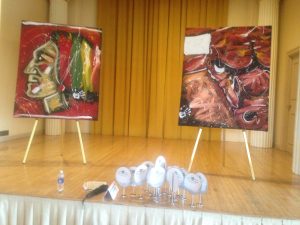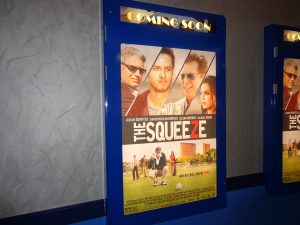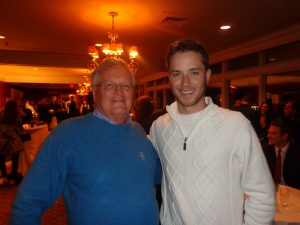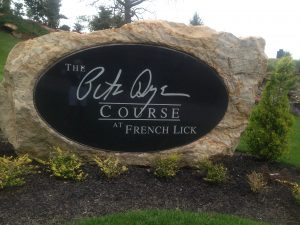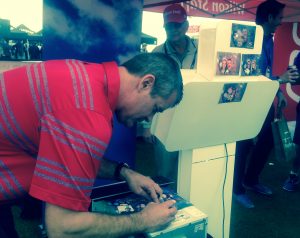You might think that Carlos Sainz Jr. would be down in the dumps after enduring eight missed cuts, seven of them in a row, to start his rookie season on the PGA Tour. That was certainly not the case, though, as the Elgin golfer approached the midway point of the season.
“I’m excited,’’ said Sainz during his final days of preparation for his tenth PGA Tour event – the Zurich Classic of New Orleans in late April. “I’ve got to keep things in perspective. It’s just a matter of time before I start playing well again.’’
Sainz earned his PGA Tour privileges with a strong finish in the 2014 Web.com Tour season, and a return to that circuit at the El Bosque Mexico Championship in April did wonders for his confidence. Making eagle on the last hole, Sainz finished in a tie for 27th place, ended his string of missed cuts and shot 68, matching his low round of the year first posted in Round 1 of the AT&T Pebble Beach National Pro Am on the big circuit.
“I was really happy about that week in Mexico,’’ said Sainz. “I hadn’t been performing as well as I’d have liked, and it was nice to see my hard work pay off. But that week we played for $600,00 and (at New Orleans) we play for $6 million. Nothing against the Web.com. It’s a great tour, but the PGA Tour is the one I want to play on.’’
That’s understandable, but – unless his success improves quickly on the PGA Tour – Sainz may have to keep bouncing between the circuits. He missed the cut at the Louisiana Open in his only other Web.com tournament of the year in March and was looking forward to his next one – at the United Leasing Championship at Victoria National in Evansville, Ind., the week after New Orleans.
“That course is one of the best on the Web.com Tour,’’ said Sainz. “It was where I played my first Web.com event. It’ll be the third time I’ve played there.’’
What Sainz needs, though, are more showings like he had in his second PGA Tour event – a tie for ninth place in the Sanderson Farms Championship back in November. It earned him $100,000, which was more than he earned in all of 2014 on the Web.com circuit. He was 10 under par in that tournament, played near Mississippi State University where Sainz enjoyed a solid collegiate career before turning pro in 2010.
“It seems like forever ago,’’ admitted Sainz. The string of missed cuts followed –the OHL Classic Mayakoba in Mexico; Sony Open in Hawaii; Humana Challenge, Farmers Insurance Open, AT&T Pebble Beach National Pro Am and Northern Trust Open in California; and the Puerto Rico Open – before his uplifting finish at the Web.com stop in Mexico.
“Playing the West Coast swing was a great experience, but I was sick for two of the tournaments and I also pulled my back,’’ said Sainz. “My allergies popped up at Pebble Beach, then I had a touch of the flu. But these are the things we deal with. Those things happen.’’
Other than the Zurich Classic and United Leasing Championship, Sainz wasn’t sure where he’d be playing the rest of the season.
“It’s hard to tell,’’ he said. “It all depends on who commits to events late, but there’ll be opportunities. I’ll have five to 10 more tournaments on the PGA tour and I’ll play another five to 10 on the Web.com to keep my game sharp.’’
He felt his best chances to get into PGA Tour events would be at the Wells-Fargo Championship, the Byron Nelson Classic, the FedEx St. Jude Classic, the Greenbrier Classic, the John Deere Classic and the Barracuda Championship in Nevada. They’ll all be played before the PGA Championship comes to Wisconsin’s Whistling Straits course in Wisconsin in August.
Sainz is also entered in the U.S. Open and has a pass into sectional qualifying. His life could change in a heartbeat if he plays well in any of those.
“It just takes one great week and a couple of good ones on these tours,’’ said Sainz, who doesn’t turn 30 until November. It’s safe to assume plenty of good tournament are still in the offing.










